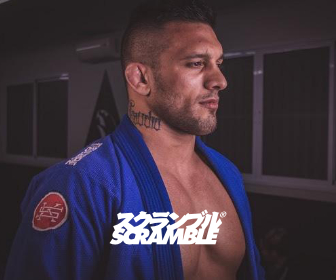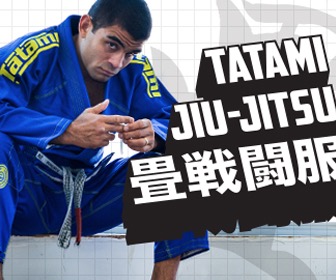Many will know Robert Drysdale as one of the brightest American jiu-jitsu athletes of all time with a long list of achievements in Brazilian jiu-jitsu (BJJ), submission-wrestling and mixed martial arts (MMA). As an instructor, Drysdale has also been involved in the development of dozens of high-end athletes, including Renato Canuto, Frank Mir, Fellipe Andrew, Rafael Domingos and many more. What many of our readers may not be aware of is Robert’s more recent work as a jiu-jitsu history researcher.
Recently some of Drysdale’s work has been revealed at the “Global Training Report”, one of the oldest BJJ/NHB history resources online, a space created by author Robert Pedreira. Pedreira has been a staunch anti-Gracie family narrative enforcer through the site as well as books such as Choque I to III, and although his books are well-sourced and valuable to our martial art’s story, his objection to anything Gracie, we feel, has sometimes clouded his message. This is not at all the case of Drysdale, whose scope – although in scink with much of Pedreira’s own, has been laid out with a more nuanced discourse.
Given the importance of Robert Drysdale’s work, we invited the Zenith Team co-founder for a chat on a range of topics, the first of which will be laid out here now. To start the series of short interviews with Drysdale, Robert will be addressing his discoveries regarding the Fadda lineage, one of the most important in our sport as it gave birth to teams such as GF Team and Nova União.
Previously it was believed that Luiz França (Oswaldo Fadda’s instructor) had learned directly from Mitsuyo Maeda, which meant this was one of the very few Brazilian grappling lines not connected to the Gracie Family, a dogma that Robert’s research has blown out of the water. So without further ado, Mr. Robert Drysdale:
BJJH: First things first. What led you to do this research? Meaning, was there a life event, or a book, news report, something that made you question the Gracie rhetoric regarding their jiu-jitsu roots?
RD: It started after my inability to answer some questions regarding the early days of BJJ in Brazil. History is known for being written by those who have everything to benefit from a certain narrative. Because of this, it is always best to approach it with skepticism.
BJJH: Where did you start with your research? What was the first thing you looked for when searching for evidence of the history of jiu-jitsu in Brazil?
RD: Mainly “Choque” by Robert Pedreira (available in English on Amazon) and then “Geo Omori: O Guardião Samurai” by Marcial Serrano (available in Portuguese) and José Tufy Cairu’s Ph.D. dissertation (English and available online). Later through my own research at the Brazilian National Library as well as some other sources including archives in Cuba where Maeda fought a few times – with the help of a local history student.
BJJH: A controversial new argument proposed by your research surrounds Luiz França, the root of the Fadda lineage.
You wrote that “The plausibility of França being indeed a student of the Gracie Academy currently holds more weight than the widespread but unfounded, belief that França learned from Maeda himself, or even Omori or Yano for that matter.”
In this article regarding the range of possibilities for França being a Geo Omori, Maeda or Gracie student, you referenced 2 sources that link França do Helio, albeit, not lengthy or in-depth articles. These are better evidence than shown for his relationship with the Japanese Masters, but still somewhat circumstantial. Is there any more data linking França with the Gracies? And give us a bit of your opinion on where Luiz actually trained?
RD: Personally I believe that lineages are somewhat arbitrary and very complex, just think about all the people who you have learned from over the years. At any rate, in the Martial Arts world, these lineages hold a lot of weight and importance so we need to make an effort to record them as accurately as the sources available allow. Luis França, Oswaldo Fadda’s teacher, is consistently referenced as a student of Maeda, making him a “non-Gracie lineage.” The problem with this lineage, much like Carlos Gracie’s own lineage, is that there is no substantial evidence linking Maeda to Fadda. There is a possibility that França learned from Takeo Yano, who had a close relationship with Maeda while they were both in the Brazilian Navy, but nothing concrete. The only evidence available points to França being a student of the Gracie Academy and of Helio Gracie specifically.
BJJH: So if the Fadda lineage is indeed a Gracie lineage, what is the role of Fadda for the history of BJJ?
RD: In reality, whether or not França trained under Yano, Maeda or Helio is of less importance than the role Fadda plays in bringing BJJ to a much broader audience. The Gracie Academy was limited to teaching BJJ in the South Zone where the elites of Rio de Janeiro lived. BJJ wasn’t something for blue-collar workers. Fadda changed this forever, he opened the doors for the practice of BJJ for everyone, regardless of social status. Including the handicapped. There were some quite touching stories regarding Fadda’s care for the children he helped as well as the handicapped, he seemed to be an amazing individual. This is, to me at least, of more significance to the development of BJJ in Brazil than being a “non-Gracie lineage.”
BJJH: I remember you referencing while broadcasting for the ACBJJ league, that you would be releasing a feature film regarding your research. Is this still on the cards, and if so, when can the BJJ community expect to see this released?
RD: Yes, we are working on the film. We have a team of people who have put a lot of time and effort into condensing 100 years of history into a film format. Not to mention the introduction of new characters, the correction of certain aspects of the official narrative as well as making it entertaining to the audience. Lastly, the difficulty in acquiring rights for old footage and pictures. Its more work than I ever thought it would be and I wanted to thank Mairbek and Zaurbek Khasiev for believing in our project.
BJJH: Also, if you plan to release a book about the research, feel free to let the readers know when to expect it.
RD: I thought about a book, but frankly, I don’t have the time. Hopefully, the film will give people a good idea of how BJJ was born from its Judo matrix. Those interested in a more in-depth look at history can take a look at Pedreira, Cairus, and Serrano.
Link to original article: global-training-report.com/drysdale_2019_1
















Professor and champion Robert Drysdale, very good this post so that we can clarify the history of Jiu-Jitsu.
What we have to note and highlight is that today the students who had their teachings directly with Mestre Oswaldo Baptista Fadda, already with the Degrees (Dan) of Great Masters and Masters, form the largest and most important contingent of Masters in Brazil.
Carlos Gracie linked his learning to Mitsuyo Myeda (Count of Koma), which as much as we want to believe, there is not a single proof that this may have happened. Helio Gracie in 1953 tells the newspapers that he only learned that Carlos his brother was practicing Jiu-Jitsu when he saw him jumping into the ring to fight Géo Omori. Just before fighting with Géo Omori, he was for three months as an assistant to Donato Pires dos Reis in the Minas Gerais-MG Police.
Oswaldo Batista Fadda was true, linked his learning to Luiz França Filho, who for all we know linked his learning to Mitsuyo Meyeda (Count of Koma). I believe he linked himself to Mayeda out of a need to demonstrate that his origin was also from a notorious master to know.
As for the link they are trying to establish that França Filho was a student of Helio Gracie, it is simply absurd. There is only one mention in a 1958 Rio Grande do Norte newspaper (France was not even alive), where a reporter announces a jiu-jitsu fight in the city, and says one of the fighters had been a student of Luiz França, who in turn had been the best student of Helio Gracie.
Professor has no reason to state categorically that France was a student of Helium. France in 1931 was a boxer, and fought for the LSM-Liga Sportiva da Marinha, in 1934 and 1935 he fought in preliminaries of Géo Omori Fights with Saburo. From 1934 he was in the Navy with Takeo Yano (who in a Takeo Yano report calls Mayeda (Count of Koma) from his master. France would then be a student of Takeo Yano, who called Mayeda his master, although we know that Takeo would have seized Jiu-Jitsu at a high school in Japan, at the same school in years later studied Kimura, while Carlos was a student of Donato Pires dos Reis, who was a student of Jacintho Ferro who in turn was a student of Mayeda (Count of Koma ).
Professor Oswaldo Baptsta Fadda, a simple man from the Carioca suburb, no lineage, no scamming, no aggression to his opponents, and not famous for combined fights, has today the largest group of Brazilian Jiu-Jitsu followers.
It is the phenomenon “Oswaldo Baptista Fadda” that has to be studied and praised by Jiu-Jitsu lovers.
Sorry for the translation done online.
@Marcial Serrano
That’s not the first time that i read you on internet : everytime you kick KNOWLEDGE
thanks